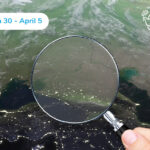The ongoing conflict in eastern Ukraine has been steadily rising in stakes and intensity in March and April, 2021. Russian-led insurgent forces broke the ceasefire hundreds of times in March, resulting in numerous Ukrainian casualties. In April, Russian self-described routine military drills might portend a second Crimean annexation, this time in the Donbas. While one American official quoted by the New York Times estimated 4,000 Russian troops, Ukraine’s Chief of Staff of the Armed Forces Ruslan Komchak said the number is likely between 20-25,000. These troops are being deployed in Crimea and along the northern and eastern Russian-Ukrainian border.
This move comes as Russian President Vladimir Putin continues to consolidate control, both over his sphere of influence and internally. President Putin’s personal rule was threatened by protests, unprecedented in scale, over the arrest of the Russian dissident Alexei Navalny. The protests themselves were inspired by the similarly extraordinary nation-wide protests that racked Belarus as the people decried the reelection of six-term Belarusian President Alexander Lukashenko. Meanwhile, Russian primacy in the post-Soviet states has weakened with the October 2020 Kyrgyz street revolution and 2020 Armenian-Azerbaijani war that saw Turkey gain a role in the ceasefire settlement. Russia’s influence is being challenged further in Moldova by the pro-Western agenda of the recently elected pro-EU Moldovan President Maia Sandu, who defeated the pro-Russian incumbent President Igor Dodon.
Ukraine has become increasingly vocal about its desire to join NATO, a foreign policy (and cultural) nightmare for the Kremlin, which sees Ukraine as a natural part of Russia. On January 28, Margarita Simonyan, the head of Russia Today’s English-language channel, went to Donetsk and in a speech demanded Russia annex the Donbas. While the Kremlin denied that Simonyan’s call for annexation reflected official policy, it fits within Russia’s foreign policy approach of coopting non-official agents to advance its international goals.
Simonyan’s speech comes after continued Russian subsidization of the breakaway Donbas regions, including mass distribution of Russian passports. These actions typically represent the initial Kremlin groundwork for eventual annexation. Meanwhile, the mass protests over Navalny reveal faltering support for President Putin. Annexing the Donbas, and saving the Russians there from the supposed junta ruling in Kyiv, would help shore up his nationalist popularity.
President Putin, however, is a pragmatist and opportunist, and would likely proceed with annexation only in a low-risk environment; in recent years, general Western support for Ukraine has been lukewarm.
For example, French President Emmanuel Macron, in his drive for restoring France’s global influence, has tried to court President Putin so French power could be directed in theaters away from Eastern Europe. This approach is in contrast to the French political and military establishment that still sees Russia as a major security and political. Nevertheless, the balance could shift should the increasingly popular far-right populist Marine le Pen (whose National Rally Party has received funds from the Kremlin) win the upcoming French presidential election. Moreover, in Germany, plans for the Nord Stream 2 gas pipeline delivering Russian gas to Europe continue. The cheap source of gas not only strengthen Russia’s economy and foreign policy options, but send signals of weakness to a Kremlin that historically only respects strength.
As for the United States, the Biden administration has begun to rouse European Union and other Western governments—including Paris and Berlin—to consider a more robust defense of Ukraine. If the Russian troop deployment along the border is meant to test this resolve, the United States will have to take the lead, and so far, Secretary of State Antony Blinken has promised such leadership. Indeed, between March 31 and April 6, Western leaders have assured Ukrainian President Volodymyr Zelensky and Ukrainian Foreign Minister Dmytro Kuleba of their commitment to Ukraine’s defense. European Union Foreign Minister Josep Borrell, British Prime Minister Boris Johnson, and NATO Secretary-General Jens Stoltenberg have stated their serious concern over the Russian troop movements and their ‘unwavering support’ for Ukrainian sovereignty and territorial integrity.
Seven joint exercises are scheduled to be held in Ukraine, starting with the British-Ukrainian Cossack Mace 2021 exercise to be held in the summer, which will host 1,000 troops from five NATO states. And the U.S. European Command raised its alert status to the highest level. Perhaps Russia has not yet maneuvered itself into a situation where a withdrawal would risk losing face, but the current ‘drills’ do not, based on the evidence and past practice, avail themselves to something routine or ministerial. Over the past week, paratroopers from Pskov and troop convoys from Siberia are being deployed to Crimea and the Ukrainian border respectively, and on April 8 ten warships from the Caspian Flotilla were deployed to the Black Sea. These deployments are provocations. Responses this Spring and likely Summer of 2021 in the West, Moscow, Washington, and Kyiv will dictate whether this ‘frozen conflict’ will become a hot war.

